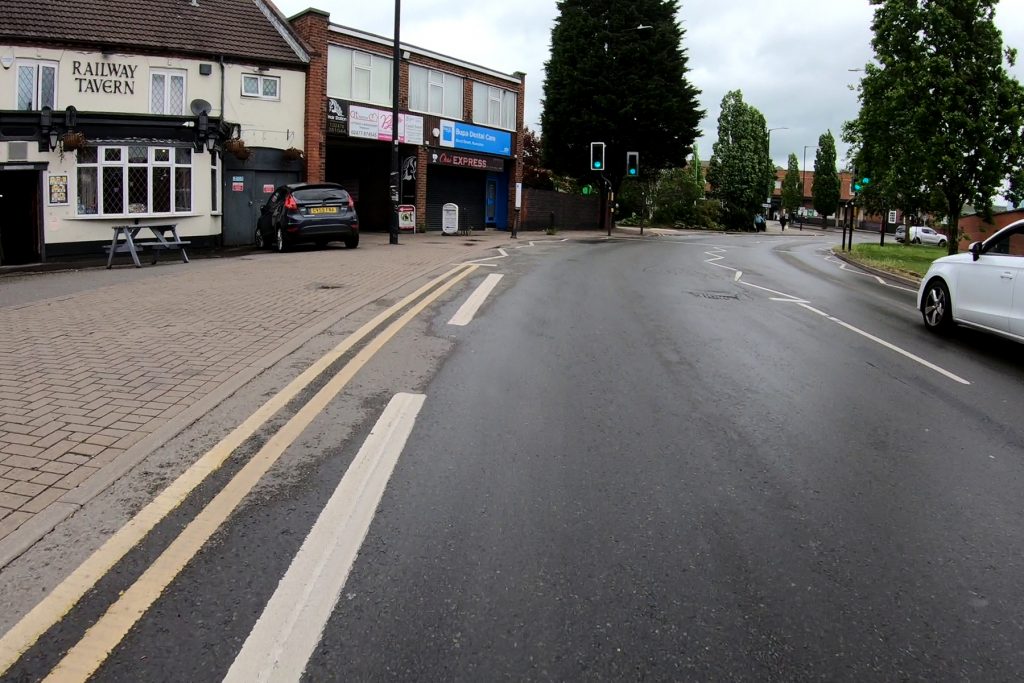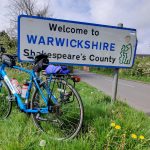Road Alteration Plans in Nuneaton
This website is made available free of charge and without adverts. While it's not here to make money, it does have costs. If you can throw a few pounds my way to help out, your support is gratefully received! Thank you!

It’s been reported that as part of the Transforming Nuneaton project, ideas are afoot to make significant changes to the town’s ring-road (part of the A444), including the branch of the road passing the station. While changes do consider improvements for bus services and make mention of cycling access to the station, in general they concern me.
Coventry Live and Nuneaton News has reported the suggested changes as follows:
- Re-configuration of the ring-road around the railway station including the possibility of making the current one-way route two-way.
- Widening the ring-road at a location where it is currently a single lane in each direction, compared to multi-lane for the rest of the route. This will be to bring the entire ring-road to ‘dual carriageway standard’ (never mind the fact that most of the road is multi-lane single carriageway).
- The potential for adding a bus-bridge to improve access to/from the bus station and to facilitate its redevelopment, or providing a new bus interchange at the railway station.
- Improvements to the railway station including pedestrian and cycle access from Weddington Terrace, on the North side of the railway (access is currently only possible from the South side of the railway), requiring a significant diversion for those on the ‘wrong’ side.
The news report doesn’t make any mention of improvements to cycling and pedestrian faciliaties save for the railway station improvements for North side access, and herein lies my major concern.

It appears that Warwickshire County Council and Nuneaton and Bedworth Borough Council are maintaining the outdated mindset that to improve the town’s traffic woes, bottlenecks need to be removed by widening the road and introducing two-way traffic flows in a small area that is currently one-way. I disagree.
I have noted on many occasions how Nuneaton’s ring-road, being just 1.3 miles long and taking only minutes to circuit in its entirety, is excessive in its current form, being mostly a multi-lane two-way road. There are shared-use paths of differing quality and standards, where cycling and pedestrians are lumped together in a poor fashion; while some parts are reasonably wide, others are narrow and not suitable for two-way cycling as it is, let alone also including pedestrians in the mix. The shared path also features the usual problems – conflict points at pedestrian crossings and bus stops, no priority over side road access, slow signalised crossing points and multi-stage toucan crossings – it’s less than ideal.
An alternative vision – a one-way ring-road for better traffic flow, a new bi-directional segregated cycleway, and improvements for pedestrians
Continuing to view this road as a two-way system is wrong, in my opinion, as is widening the bottleneck section for the planned purpose. Instead, the entire ring-road needs to be reconfigured. It should be converted into a one-way route all the way around with a maximum of two lanes for motor vehicles (maybe three at junctions, for turning). Space freed up should be reallocated to a proper safe and segregated bi-directional cycleway, in turn freeing up the existing pavements to be solely space for pedestrians.

When it comes to the road passing the railway station (above), space here is quite limited and I have been previously advised by Warwickshire County Council that space is not available for additional infrastructure (presumably short of massive redevelopment at least). Therefore, changing this from the current one-way route to a two-way road is foolish.
Instead, this section should be declassified from its A-road status and become a smaller road for station and other premises access only. The current two lane provision should be reduced to one lane with the remaining space again reallocated to bidirectional cycling, providing the required safe and easy access which does not currently exist.

Of the points listed in the news report and summarised above, the only positive changes I can see are firstly the new station access (something which I know has been argued for, for some time) and the potential provision of a bus interchange at the station. Again I would presume a lot of redevelopment would be needed, but if the bus station itself were to be adjacent to the train station, that would make a lot of sense in providing joined up public transit, where at present there is a less than pleasant walk between the two sites.
Planning for a twenty-first century integrated transport solution not dominated by cars and prioritising active, sustainable travel options
Whilst I acknowledge the importance of the ring-road as a key route both to and through Nuneaton as part of the A444, it is important that both councils consider the impact that excessive vehicle use has on the town and its people, and then look to manage transport differently, moving away from the old car-centric models of the twentieth century.
Continuously improving provision for cars is unsustainable. Induced demand means that increasing road capacity for cars will ultimately lead to more of the same, resulting once again in congestion and pollution. The real solution to vehicle congestion then is not to try to build out of it with more lanes, but to reduce the number of vehicles using the roads. This means that instead, councillors and highways engineers must embrace modern ways of thinking that prioritise active travel solutions first, public transport solutions second, and only then provide for private motor transport where it is needed as a last resort.
Induced demand can work in a positive way – increasing the facilities for active and public travel, enabling people to make the choice to travel by foot, cycle or public transport, will lead to an uptake in those methods – particularly if a scheme here is then backed up with a larger high-quality network across the town. The cost-benefit ratio of active travel schemes is known to provide a high return, and then there are also the benefits to the population in terms of improved health and wellbeing, reduced levels of inactivity and better air quality.
Update (2100): I have written to both my councillor and MP with my concerns.
Update (12/06/2019): I have been advised that plans are in the early preliminary stages at present, no decisions have been made as yet to what the preferred option will be, and stakeholders (including the local Cycle Forum) will be involved at the appropriate time. My own suggestions have been passed on to highways officers.
At this stage, it is important that everyone who is interested in seeing a better vision for Nuneaton’s core transport infrastructure keeps aware of developments. I recommend being in contact with local councillors to press for a solution that moves the town away from car dominance, and when the time comes, to feed into any consultations that arise.






